Moong Dal Idli is just the thing for people who want to eat Idli but avoid rice. This recipe of Dali Santhan, as this Idli is called in Konkani, uses just moong dal and udad dal, and packs quite a punch in proteins.
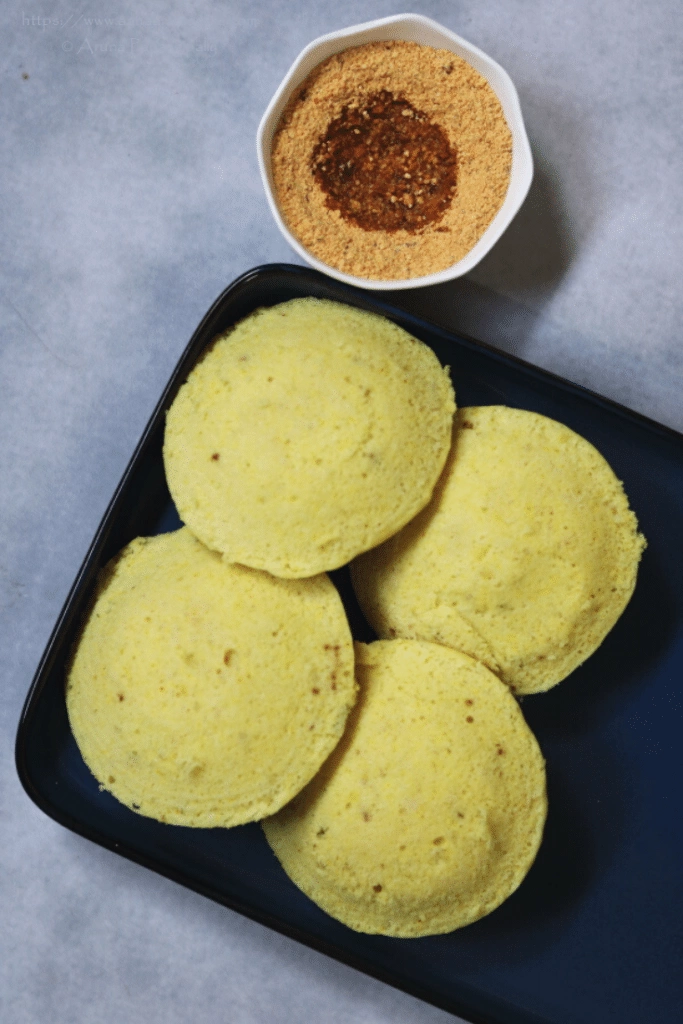
In recent times, I have reduced the amount of rice I eat for meals and am very conscious of ensuring that rice does not creep into my diet (in the form of rice flour, or then rice in idli and dosa, etc.). So this Moong Dal Idli, whose recipe I had first posted in 2014, has become my go-to recipe for idlis in recent times. This idli is called Dali Santhan in Konkani and is a specialty of the Mangalore region of Karnataka.
What I like about Dali Santhan is also that the ginger and green chilli in it give it a nice flavour, making accompaniments redundant at times.
A Santhan (or Sandan) is a spongy idli that is steamed in a plate instead of a traditional idli mould.
Do also try my recipes for:
- Kanchipuram Idli: Prasadam at Varadaraja Perumal Temple
- No Rice Idli with Millets
- Upvas ka Dhokla | Farali Dhokla | Vrat ka Dhokla
Now, without further ado, I present Dal Idli also known as Dali Santhan.
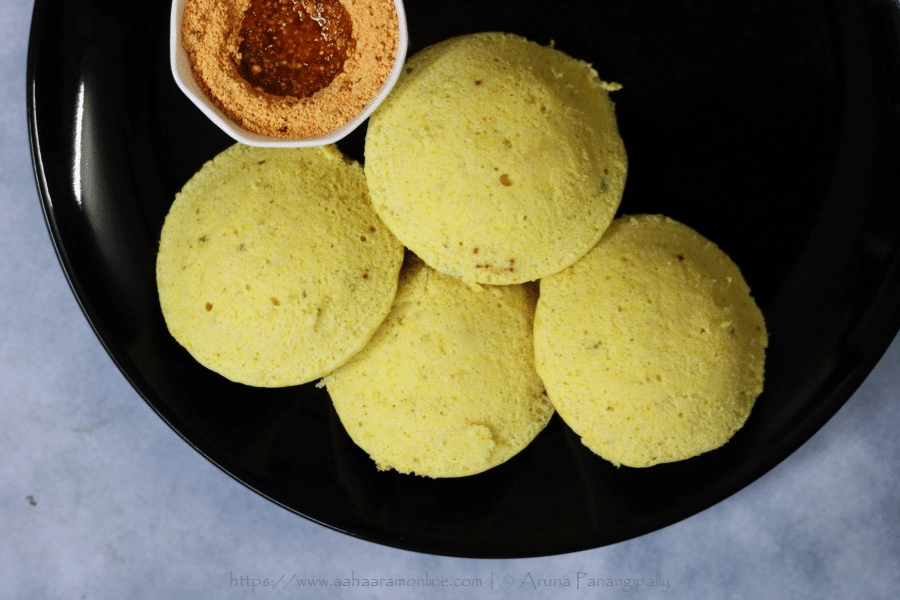
I had first posted this recipe in September 2014 and have updated it today with better photos and a recipe card.
How to Make Moong Dal Idli | Dali Santhan
Make the Batter for the Moong Dal Idli
-
- Wash 1/2 cup udad dal well under running water.
- Now, soak this 1/2 cup Udad Dal and 1/4 tsp fenugreek seeds in 1.5 cups of water for at least 3 hours. In winter, I let the dal soak for at least 4 hours and use lukewarm water.
- In parallel, soak 1/2 cup Moong Dal separately in 1.5 cups of water for at least 3 hours. In winter, I let the dal soak for at least 4 hours and use lukewarm water.

- After 3 to 4 hours, drain and save about 2 to 3 tbsp of water in which the Udad dal was soaked.
- Drain the remaining water completely from the two dals.

- Now, grind the two soaked dals together to a smooth batter of dropping consistency. If you need to add water, use the water we save in step 4.

- Transfer the dal batter to a bowl, cover and keep it in a warm place to ferment for at least 8 hours. In winter, you may need upto 12 hours.
- After 8 hours, check if the batter has fermented. It should rise a bit and become spongy.

- Grind 4 green chillies and 1/2″ piece of ginger to a coarse paste.

- Add the green chilli-ginger paste, 1/4 tsp turmeric and some salt to the fermented dal batter.

- Mix with a gentle hand.
- Making the Moong Dal Idlis
- Add water to a steamer or a pressure cooker (remove the weight from the lid of the pressure cooker) and bring the water to a boil.
- Use a few drops of oil to lightly grease 8 cavities of an regular idli mould.
- Pour enough batter into each cavity.
- Place the idli stand in the steamer/cooker.
- Steam Moong Dal idlis for about 8 minutes. Do not steam for too long or the idlis will become hard.
- Turn off the heat and let the cooker cool for 5 minutes and take the stand out.

- Using a sharp knife, gently loosen the idlis from each cavity.
- Serve the Moong Dal Idli hot with some Idli Kharam Podi (Milagai Podi) or Coriander Chutney.
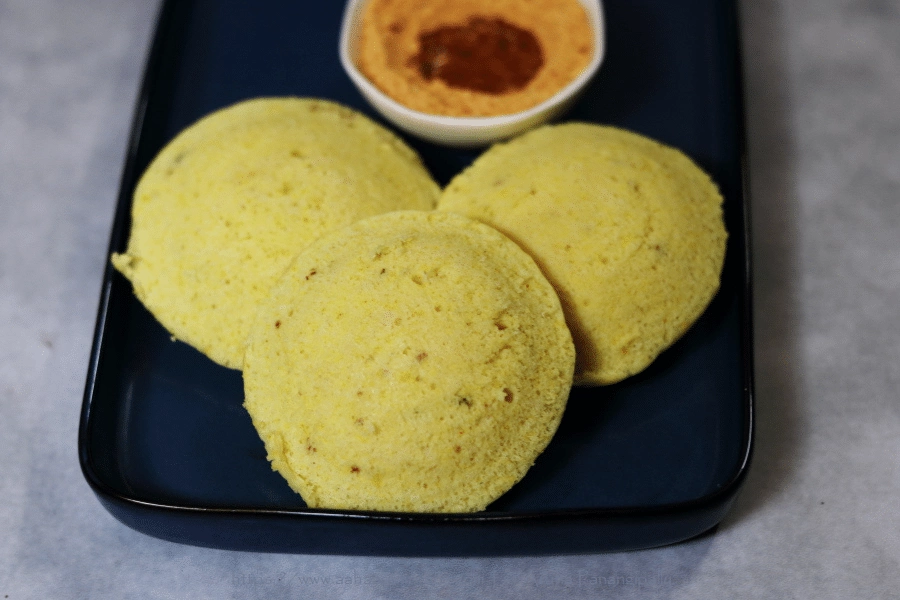
Recipe for Moong Dal Idli | Dali Santhan | No Rice Idli | Dal Idli
Moong Dal Idli | Dali Santhan | Dal Idli | No Rice Idli
Equipment
- Bowl
- Spoon
- Grinder
- Idli Mould
- Steamer
Ingredients
- 1/2 Cup Moong Dal
- 1/2 Cup Udad Dal
- 1/4 tsp Methi Seeds
- 4 Green Chillies
- 1/2" Ginger
- 1/4 tsp Turmeric
- Salt to Taste
- Oil for Greasing the Idli Mould
Instructions
- Wash 1/2 cup udad dal well under running water.
- Soak this 1/2 cup Udad Dal and 1/4 tsp fenugreek seeds in 1.5 cups of water for at least 3 hours. In winter, I let the dal soak for at least 4 hours and use lukewarm water.
- In parallel, soak 1/2 cup Moong Dal separately in 1.5 cups of water for at least 3 hours. In winter, I let the dal soak for at least 4 hours and use lukewarm water.
- After 3 to 4 hours, drain and save about 2 to 3 tbsp of water in which the Udad dal was soaked.
- Drain the remaining water completely from the two dals.
- Grind the two soaked dals together to a smooth batter of dropping consistency. If you need to add water, use the water we save in step 4.
- Transfer the batter to a bowl, cover and keep it in a warm place to ferment for at least 8 hours. In winter, you may need up to 12 hours.
- After 8 hours, check if the batter has fermented. It should rise a bit and become spongy. Sometimes (especially in winter), the batter may not rise a lot even after 12 hours. In such a case, gently scoop a spoonful and check the texture. If it is spongy, then you can use the batter. If you ferment the batter too much, it becomes sour and smells.
- Grind 4 green chillies and 1/2″ piece of ginger to a coarse paste.
- Add the green chilli-ginger paste, 1/4 tsp turmeric and some salt to the fermented dal batter.
- Mix with a gentle hand.
- Add water to a steamer or a pressure cooker (remove the weight from the lid of the pressure cooker) and bring the water to a boil. Always let the steam build up before you place the idli stand in the steamer.
- Using a few drops of oil, lightly grease 8 cavities of an regular idli mould.
- Fill each cavity with the batter.
- Place the idli stand in the steamer/cooker.
- Steam Moong Dal idlis for about 8 minutes. Do not steam for too long or the idlis will become hard.
- Turn off the heat and let the cooker cool for 5 minutes and take the stand out.
- Using a sharp knife, gently loosen the idlis from each cavity.
- Serve the hot Moong Dal Idli immediately with some Idli Kharam Podi (Milagai Podi) or Coriander Chutney.

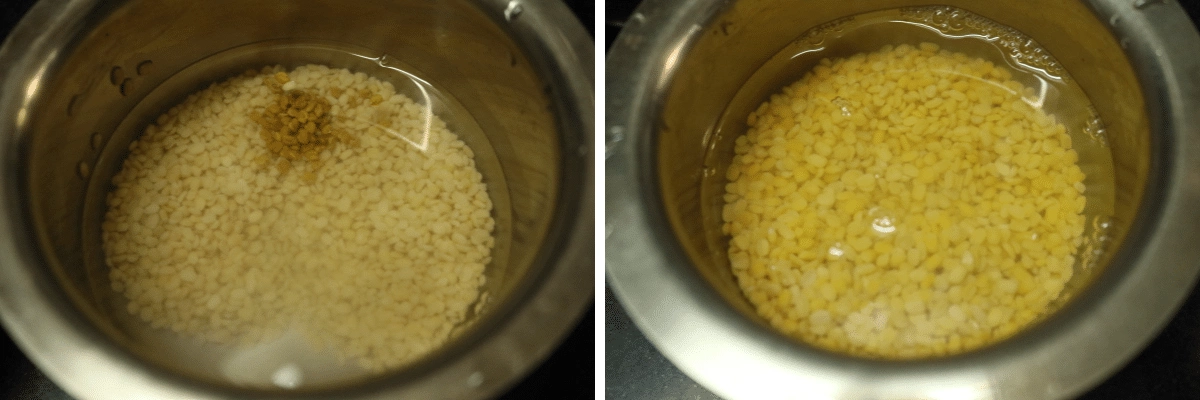
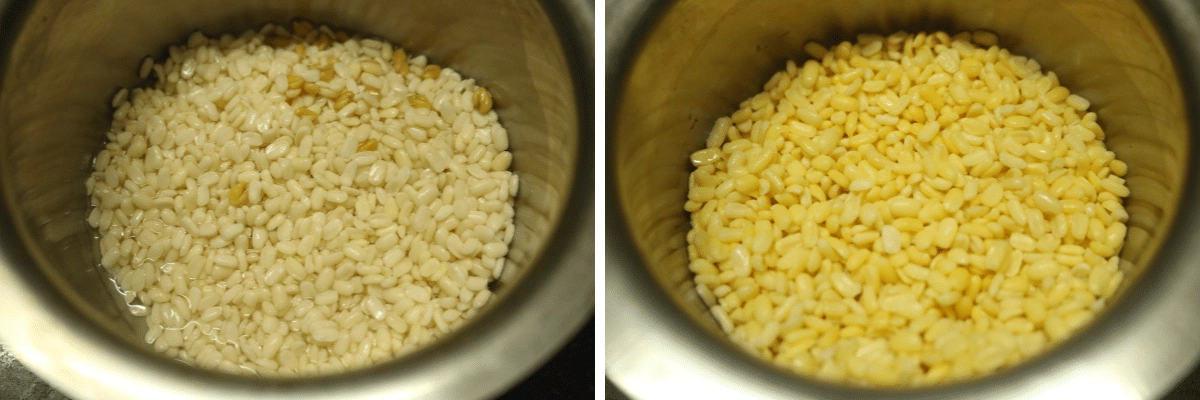
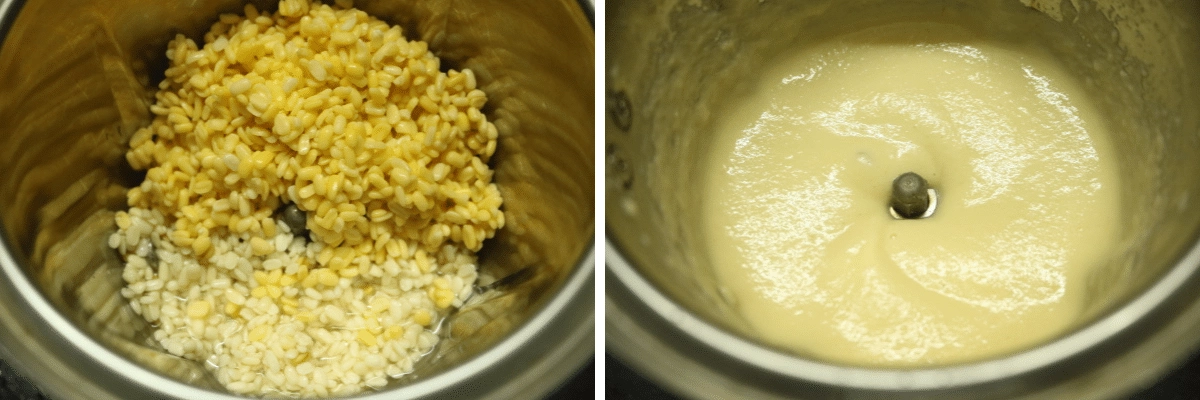
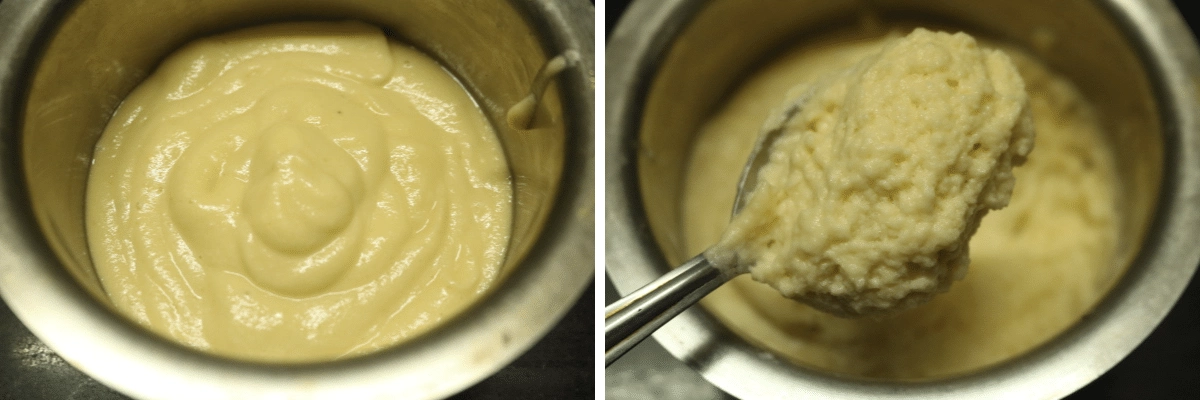
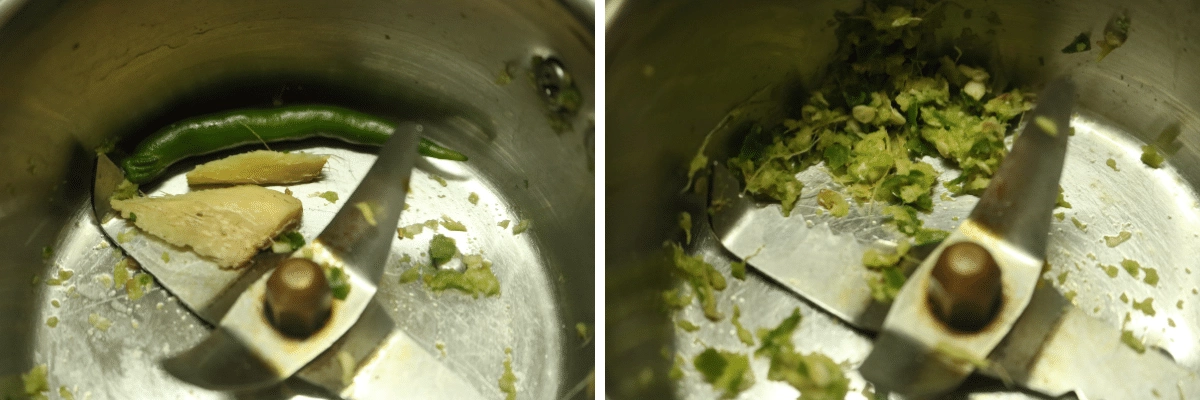
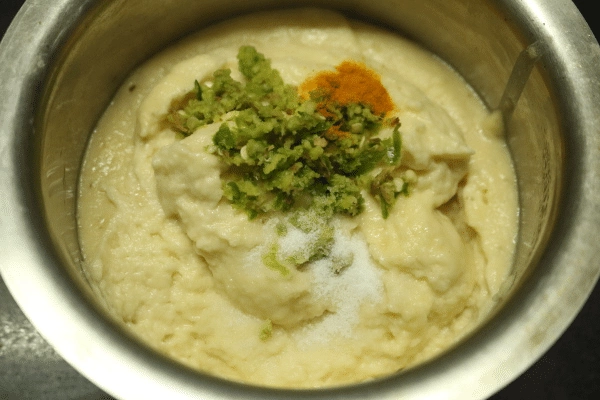
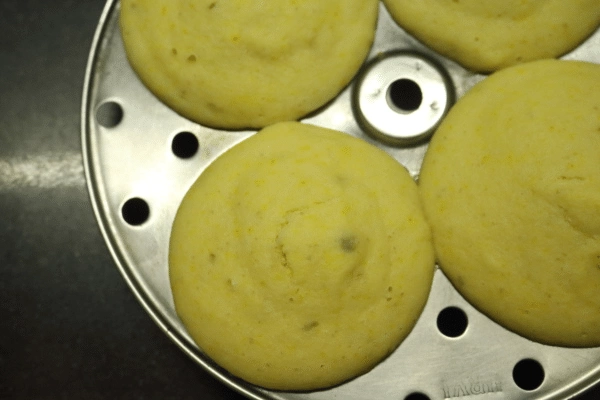
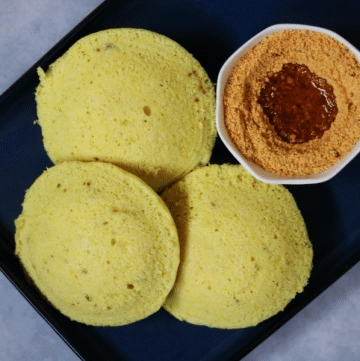

Love, love, love, love, love, love idli. It’s maybe one of my all time favorite dishes. I’ve never made it with mung dal, so this I will have to try — soon. 🙂
Wow, this is such a healthy idli, can’t wait to try it Aruna!!!
Do… Do… You won’t be disappointed!
Thanks I forgotten this recipe. Would join me for breakfast on Monday?
If wishes were horses…. 🙂
this looks gorgeous 🙂
Moong dal in the above recipe.. Is it yellow one or the split green moong or the whole green moong?
Yellow one, Anju!
Gorgeous Aruna, since many days I wanted to try moong dal idlis and here it is… now as recipe is here will give it a try ASAP. …
Do let me know how it turns out… 🙂
Sure dear…. 🙂 🙂
I am just waiting for the day when will go back to India and buy one idli mould. Then I will try all your idli recipes…… :D…….Dal Idli looks gorgeous Aruna…….. 🙂
You don’t need an idli mould, Jayeeta. You can make this and other idlis in katoris or even plates. Only shape will change.
Then can I use a cup-cake tin ??????
Never tried, but why not? As long as it goes into your steamer/pressure cooker.
Looks interesting…will try once.
Wonderful flavors here, Aruna! I’ll bet it smells heavenly!
Very nice
I remember trying Idli when we were travelling around India. I can still remember the texture so well! Thank you for sharing this at the VVLP.
Never tried Idli with moong dal:-) will try soon
Wow, first time I came across an idli recipe without rice. Can I share it on my FB page tomorrow Aruna?
I had no idea you could add mungh dhal to Idlis. Thanks for sharing Aruna 🙂
Hi Aharam,
I just hopped by from Virtual Vegan Potluck to experience your Moong and Udad Dal Idli. What an amazing recipe! I love anything which includes green chilies, ginger and turmeric. I can’t wait to try this recipe. What a pleasure to explore your recipes. I blog at UrbanNaturale.com and I am sharing this and following you on social media to stay in touch! All the best, Deborah
Wow! I have to try this! I eat dosa and idli rarely as I’m reducing white rice in my diet. It leaves me and my husband craving for idli, dosa. This recipe looks perfect! Thank u so much for the post. U have no idea the big favor u have done! 😀
It was indeed a wonderful discovery. Do let me know how it turns out.
Hey I tried it and it was awesome! 🙂 Thanks.. Quick and easy! 🙂
Hey! Thank you so much for the feedback. 🙂